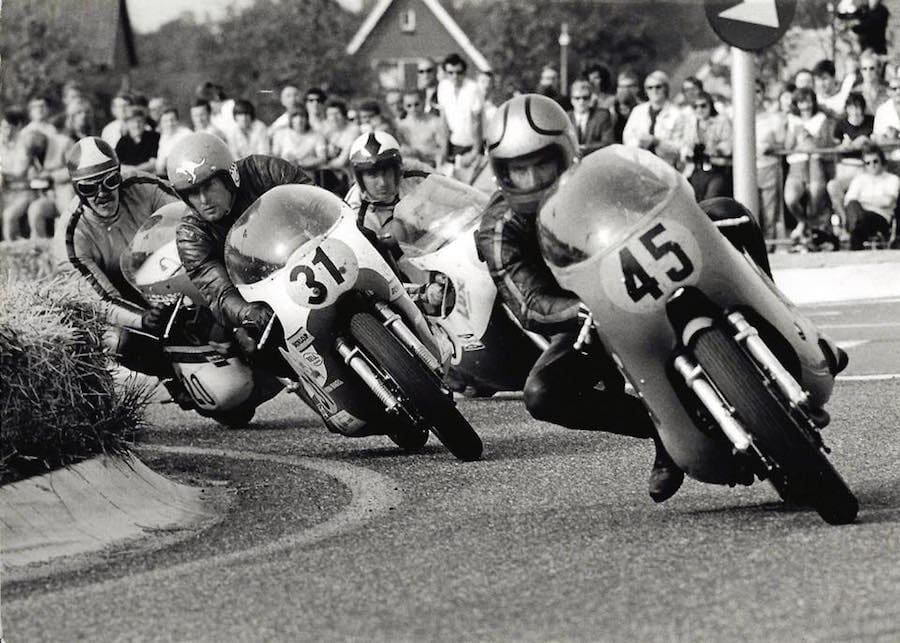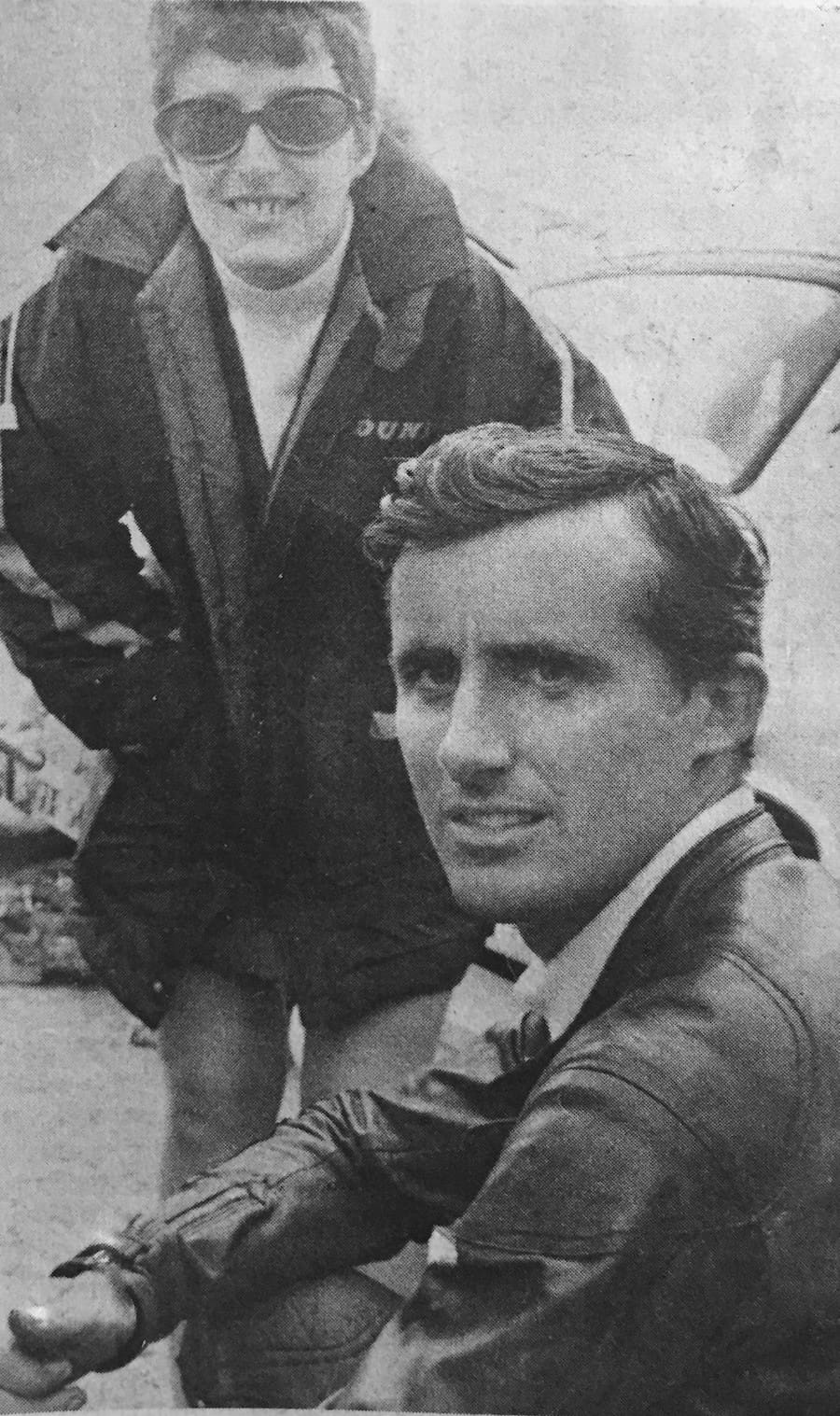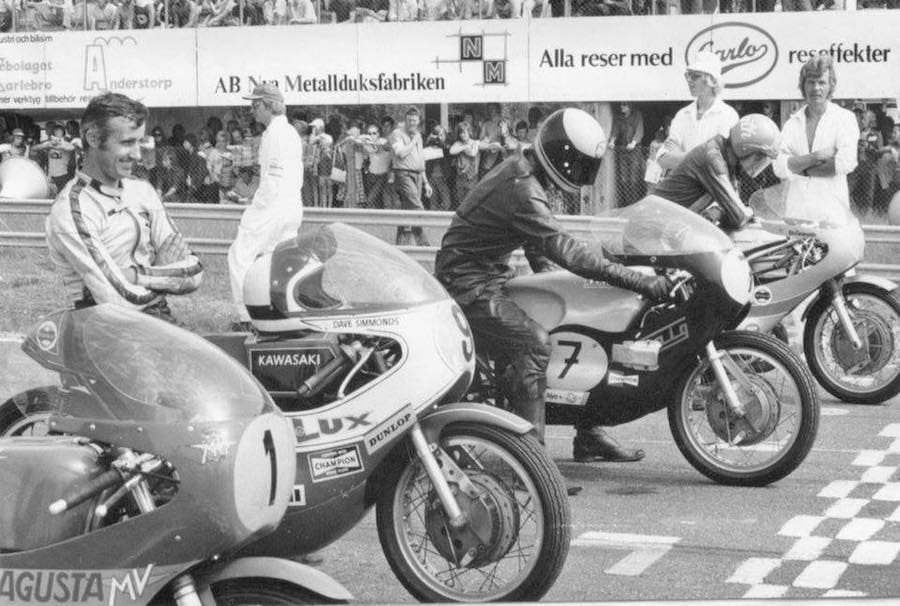Many will remember Kawasaki’s grand prix success in the late 1970s with Kork Ballington fending off teammate Gregg Hansford, then with Anton Mang’s incredible run in the early 80s. This trio won a staggering 73 grands prix from 1978-82 on Kawasaki KR250s and 350s, Ballington and Mang each winning four world titles for Team Green in its historic 250/350 dominance.
But Kawasaki’s first taste of world title glory actually came in the 125s in 1969 through Englishman Dave Simmonds, a highly competitive and resourceful rider in the mould of Kel Carruthers, who was 250 world champion in the same year.
Simmonds was born in Egypt to British parents in 1940. He lived in Kingswinford, Worcestershire, and was married to Julie Boddice, the daughter of former racer Bill Boddice and sister of top sidecar racer Mick Boddice.
In 1963, Simmonds first raced the unheralded Tohatsu 50cc and 125cc machines in both world championship and British competition, before he assumed the mantle of England’s tiddler titan in the late 60s.
Three years later, Kawasaki lined up for what it hoped would be its first full championship year. But while its 50, 125 and 250 racebikes were fast, they were also prone to mechanical problems.
On top of that, the team suffered a tragic blow when its only works rider, Toshio Fujii, was killed in practice for the Isle of Man TT. That was enough to put a stop to the project, but for the last race of the season, the Japanese GP, Kawasaki invited Simmonds to ride its 125cc twin.
By then Simmonds already had British 125 and 250 titles under his belt and looked to have the talent, but he was up against the exotic Suzuki and Yamaha four-cylinder 125s, while Honda had a five-cylinder tiddler.
Facing such competition on a twin-cylinder rotary-valve Kawasaki two-stroke was always going to be a big ask, and yet he still managed a creditable eighth place.
On the back of this race, Simmonds asked to ride Kawasaki’s 125cc liquid-cooled V4 – until then raced only domestically – but was turned down; the factory would not commit to a full
GP effort.
So Simmonds asked instead for one of the old twins and some spares to campaign on his own. Again the initial answer was no, but when he attended a training course at the factory and demonstrated his technical skills, the race bosses finally agreed.
Simmonds contested the world championships in ’67 and ’68 with one of the old twins, driving himself across Europe and tuning and repairing the bike on his own. Sadly, mechanical problems and injuries blighted his campaigns – he finished seventh in the first year, and 14th the next.
But everything changed in 1969. The FIM banned expensive multi-cylinder engines and eight-speed gearboxes in the 125 class, prompting the other big Japanese factories to pull out (though they continued supporting certain riders). The playing field was suddenly a lot more level for Simmonds – except that his bike was now three seasons old, and he was running out of spares.
The season didn’t start well when he missed the first race in Spain because the organisers wouldn’t pay him start money. But he hit back hard, winning eight of the remaining 10 rounds and finishing second in the others to claim the 125 world title and single-handedly secure the manufacturers’ championship for Kawasaki.
In 1970 Simmonds finished fourth in the 125 world championship, then moved up to a 500 in 1971, developing the Kawasaki two-stroke triple with the addition of Reynolds frames.
After finishing second behind Agostini at Imatra, he gave Kawasaki its first GP win in the 500cc class at Jarama en route to claiming fourth overall in his 500 debut year, ahead of Jack Findlay.
In ’72 his best result was runner-up in the last grand prix of the year at Montjuïc Parc – behind Chas Mortimer’s Yamaha and ahead of Findlay’s Jada.

A month later, at an international race at Rungis on the southern outskirts of Paris, Findlay’s caravan caught fire. Simmonds rushed into the inferno along with countryman Billie Nelson to save Jack’s mother, who they believed was inside.
During the rescue, the van’s gas cylinder exploded and Simmonds sustained critical burns. His wife Julie ran into the fire in a desperate attempt to save her husband. Simmonds succumbed to his injuries the following Monday, 23 October 1972.
A stunned Findlay, who lived in France, could only talk about the terrible incident a month later: “Julie was very seriously injured and her father and mother came to Paris as soon as they could, and David’s father arrived a few days later. With all the statements that had to be made and other formalities, my services as interpreter were badly needed. Eventually, Julie was considered well enough to make the voyage to England by ambulance, but she only just survived. She is on the mend and the skin grafts to her feet had taken, and she just had her first meal.”
A fund was set up to assist Julie’s recovery.
Billie Nelson survived the incident, but was killed in a crash at the 1974 Yugoslav 250cc Grand Prix at Opatija that injured several spectators.
Remembered for his brilliant riding, generous nature and undoubted bravery, Dave Simmonds is hailed as a legend within the halls of Kawasaki. He gave the company its first GP race win, its first world championship, its first TT win, and its first 500cc GP win.


Darryl Flack











